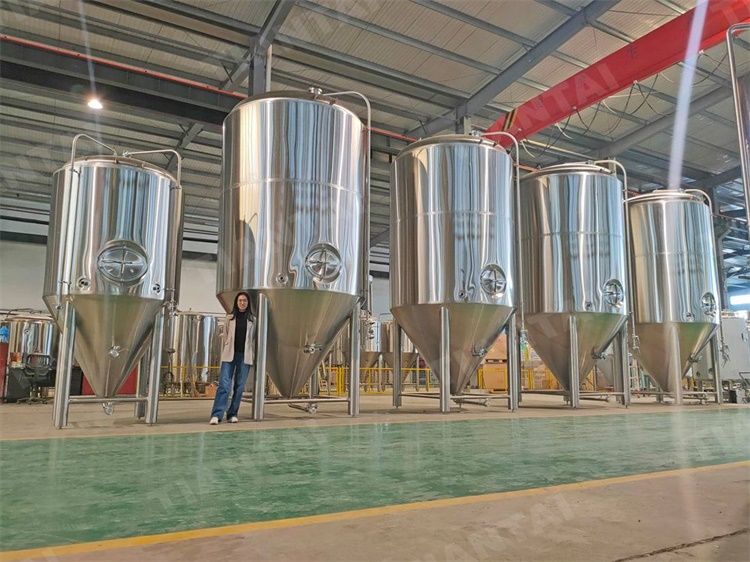Wort ferment in beer brewing process
The fermentation process of beer brewing is the process of converting sugars into alcohol and carbon dioxide or organic acids under anaerobic conditions by adding yeast, other bacteria species and their mixtures. A stricter definition of wort fermentation is the chemical conversion of sugars into alcohol. The science of fermentation is called brewing.
After the wort has been cooled and oxygenated - usually using sterile air - the yeast is added and the wort begins to ferment. At this stage, the sugars obtained from the malt are metabolized into alcohol and carbon dioxide, and the product can be called "beer" for the first time. Wort fermentation can take place in a variety of tanks, from huge conical tanks, to open stone vessels, to wooden barrels.
Today, most breweries use conical fermenters (CCV for short), the bottom of which is conical and the main tank is cylindrical. The angle of the bottom of the cone is about 60°, which allows the yeast to settle naturally to the top of the bottom of the cone without taking up too much vertical space. The conical tank can perform the functions of wort fermentation and beer aging at the same time. At the end of fermentation, yeast and other solids settle to the top of the cone bottom, where there is a drain to easily drain them out of the tank.
.jpg)
Open fermenters are also used, usually for display in bars, or for fermenting wheat beers in European regions. The lack of a top in such a fermenter greatly increases the risk of infection with harmful flora. However, with proper cleaning procedures and planning for who can enter the fermenter, the corresponding risks can be well controlled.
The fermentation tank is mainly made of stainless steel. If they are cylindrical tanks with a cone bottom, they will be placed vertically instead of horizontally as is typical for beer aging tanks. Only a few breweries still use wooden barrels as fermentation tanks, which are difficult to clean and susceptible to harmful bacteria, so they need to be replaced almost every year.
Vincent Lee
Email: [email protected]
After the wort has been cooled and oxygenated - usually using sterile air - the yeast is added and the wort begins to ferment. At this stage, the sugars obtained from the malt are metabolized into alcohol and carbon dioxide, and the product can be called "beer" for the first time. Wort fermentation can take place in a variety of tanks, from huge conical tanks, to open stone vessels, to wooden barrels.
Today, most breweries use conical fermenters (CCV for short), the bottom of which is conical and the main tank is cylindrical. The angle of the bottom of the cone is about 60°, which allows the yeast to settle naturally to the top of the bottom of the cone without taking up too much vertical space. The conical tank can perform the functions of wort fermentation and beer aging at the same time. At the end of fermentation, yeast and other solids settle to the top of the cone bottom, where there is a drain to easily drain them out of the tank.
.jpg)
Open fermenters are also used, usually for display in bars, or for fermenting wheat beers in European regions. The lack of a top in such a fermenter greatly increases the risk of infection with harmful flora. However, with proper cleaning procedures and planning for who can enter the fermenter, the corresponding risks can be well controlled.
The fermentation tank is mainly made of stainless steel. If they are cylindrical tanks with a cone bottom, they will be placed vertically instead of horizontally as is typical for beer aging tanks. Only a few breweries still use wooden barrels as fermentation tanks, which are difficult to clean and susceptible to harmful bacteria, so they need to be replaced almost every year.
Vincent Lee
Email: [email protected]



.jpg)


Get In Touch